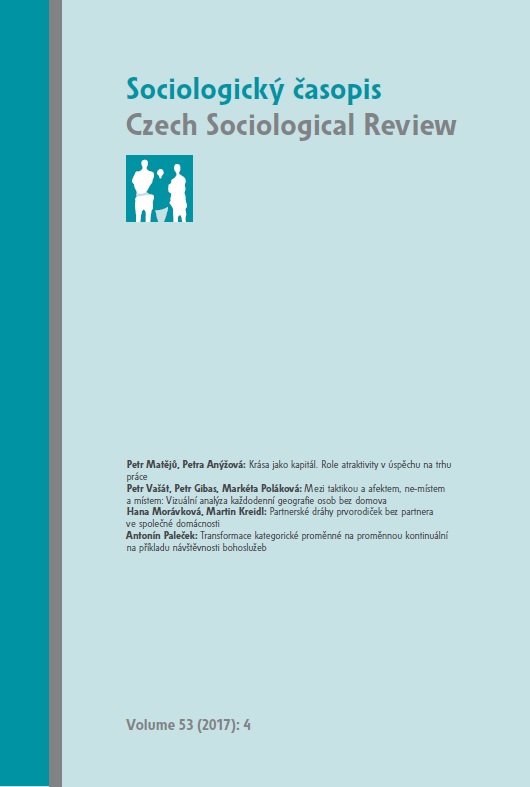Transformace kategorické proměnné na proměnnou kontinuální na příkladu návštěvnosti bohoslužeb
The Transformation of a Categorical Variable into a Continuous Variable: The Example of Church Attendance
Author(s): Antonín PalečekSubject(s): Methodology and research technology, Applied Sociology
Published by: AV ČR - Akademie věd České republiky - Sociologický ústav
Keywords: frequency of church attendance; methodology of quantitative religious research; numerical variable; intergenerational and intragenerational transmission
Summary/Abstract: Many surveys include variables on the frequency of respondents’ church attendance. Usually these are a categorical, ordinal type of variable. However, in a quantitative analysis of the inter- and intragenerational reproduction of church attendance categorical variables may have some disadvantages and limitations. This article discusses and tests the possibilities of a different methodological approach, where ordinal variables indicating the frequency of church attendance are transformed into numerical-type variables. More simply put, respondents are asked how many times a year they attend church and this information is expressed in a new variable. There are a few analytical advantages to this numerical variable. First, the information on the frequency of church attendance is not divided up into multiple categories and can be transposed for use in multivariate analysis. Second, even if there are only a small number of cases in the data set there is no need to reduce the categories of variables. Third, the results of the analysis can be presented as a single numerical value. The individual examples in this analysis focus narrowly on the rates of inter- and intragenerational reproduction of church attendance, and the analytical possibilities of numerical variables on attendance rates are tested on data from the Religion module of the International Social Survey Programme 2008.
Journal: Sociologický časopis / Czech Sociological Review
- Issue Year: 53/2017
- Issue No: 04
- Page Range: 593-615
- Page Count: 23
- Language: Czech

